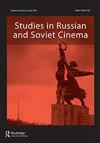The aesthetics of justice: recognition and the Holocaust in Soviet films of the Thaw
IF 0.4
0 FILM, RADIO, TELEVISION
引用次数: 0
Abstract
ABSTRACT The mediatisation of war crimes trials in the USSR during the Thaw led to the emergence of a sub-genre of the Soviet war film: melodramas focused on the unmasking of Nazi collaborators through narrative recognition. Built on the trope of anagnorisis, the films hold an aesthetic mirror to the juridical process of investigating, sentencing and punishing enemies of the state, resolving the disruption of collaboration to the Soviet myth of war. But by drawing upon the authority and effect of witness to trauma, the films also generate an indexical reference to the time and place of experience, undermining the narrative logic of the genre. The Lithuanian television film, Balys Bratkauskas’ Two in a Small Town (1965), marks a significant departure from the genre, testifying to the Holocaust by conveying the intimacy of violence in the western periphery of the USSR.正义美学:苏联电影中的承认与大屠杀
摘要苏联战争罪行审判的调解导致了苏联战争电影的一个子类型的出现:情节剧通过叙事识别揭露纳粹合作者。这些电影以阿纳诺里斯的比喻为基础,为调查、判刑和惩罚国家敌人的司法过程提供了美学镜像,解决了合作对苏联战争神话的破坏。但通过利用创伤目击者的权威和效果,这些电影也对经历的时间和地点产生了指数化的参考,破坏了这一类型的叙事逻辑。立陶宛电视电影Balys Bratkauskas的《小镇上的两个人》(1965年)标志着与这一类型的重大背离,通过传达苏联西部边缘暴力的亲密感来证明大屠杀。
本文章由计算机程序翻译,如有差异,请以英文原文为准。
求助全文
约1分钟内获得全文
求助全文

 求助内容:
求助内容: 应助结果提醒方式:
应助结果提醒方式:


